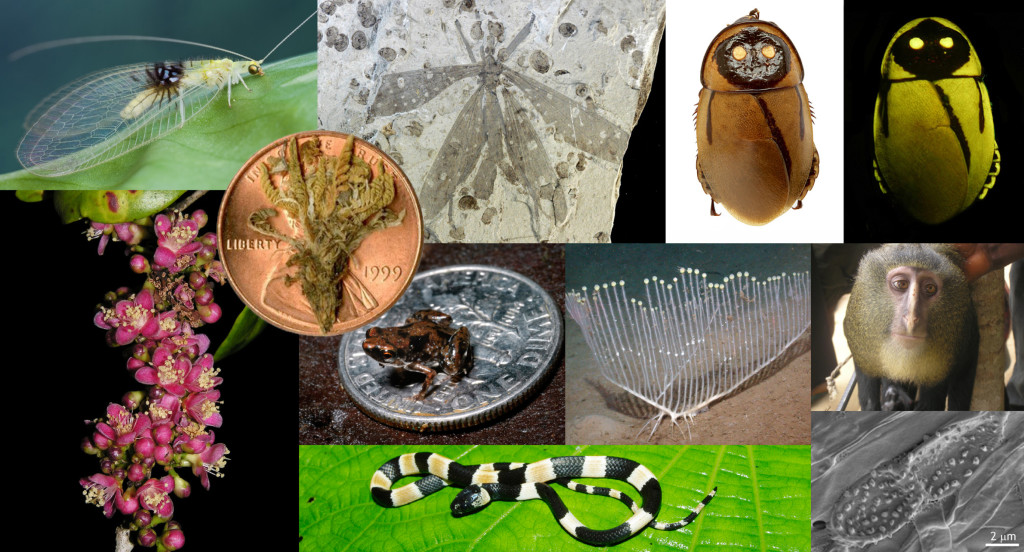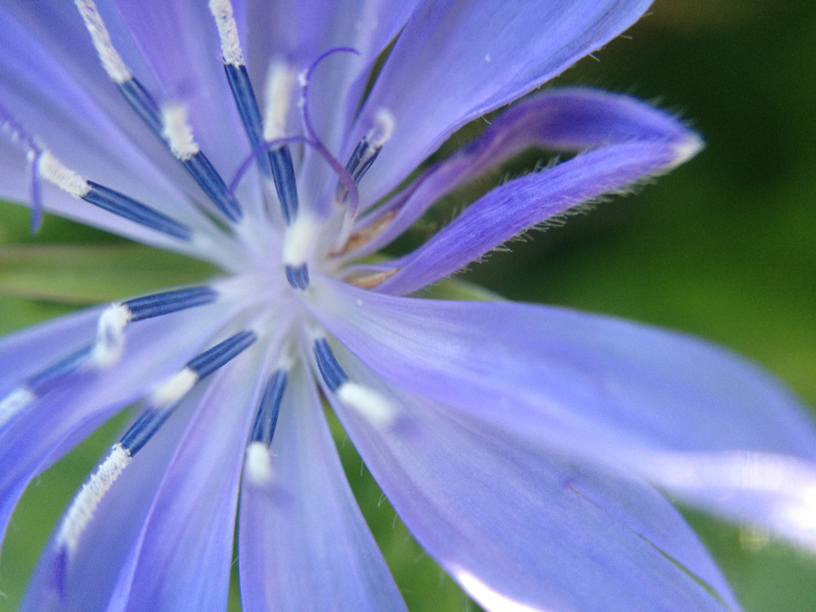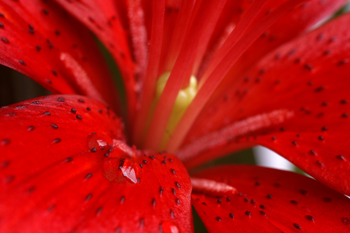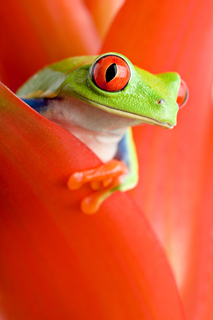New Species Discovered – The 2013 Top 10 Species
The 2013 top 10 list of new species discovered in 2012 was recently (May 23) announced by the International Institute for Species Exploration (IISE) at Arizona State University. The global committee of taxonomists – scientists selected their top 10 species of 2012 from over 140 nominated species. In choosing the top 10, they considered the following –
- Unexpected features
- Unexpected size
- Found in rare or difficult to reach habitats
- Significant to humans (eg. play a certain role in human habitat or considered as a close relative)

Top 10 new discovered species in 2012 (Photo composite by Jacob Sahertian)
Amongst the top 10 list of new species, our favorites are the glow in the dark cockroach, lacewing butterfly, the world’s smallest vertebrate and snail eating snake. Some of the other notable items in the top 10 included the smallest violet in the world, a carnivorous sponge in deep water, Lesula monkey, black staining fungus, a new Eugenia family shrub and a new hangingfly species. Here are excerpts from IISE’s news announcement of some of our favorite species –
Lightning Roaches?
Lucihormetica luckae
Country: EcuadorGlow-in-the-dark cockroach: Luminescence among terrestrial animals is rather rare and best known among several groups of beetles – fireflies and certain click beetles in particular – as well as cave-inhabiting fungus gnats. Since the first discovery of a luminescent cockroach in 1999, more than a dozen species have (pardon the pun) “come to light.” All are rare, and interestingly, so far found only in remote areas far from light pollution. The latest addition to this growing list is L. luckae, that may be endangered or possibly already extinct. This cockroach is known from a single specimen collected 70 years ago from an area heavily impacted by the eruption of the Tungurahua volcano. The species may be most remarkable because the size and placement of its lamps suggest that it is using light to mimic toxic luminescent click beetles.
No Social Butterfly
Semachrysa jade
Country: MalaysiaSocial media lacewing: In a trend-setting collision of science and social media, Hock Ping Guek photographed a beautiful green lacewing with dark markings at the base of its wings in a park near Kuala Lumpur and shared his photo on Flickr. Shaun Winterton, an entomologist with the California Department of Food and Agriculture, serendipitously saw the image and recognized the insect as unusual. When Guek was able to collect a specimen, it was sent to Stephen Brooks at London’s Natural History Museum who confirmed its new species status. The three joined forces and prepared a description using Google Docs. In this triumph for citizen science, talents from around the globe collaborated by using new media in making the discovery. The lacewing is not named for its color — rather for Winterton’s daughter, Jade.
World’s Smallest Vertebrate
Paedophryne amanuensis
Country: New GuineaTiny frog: Living vertebrates – animals that have a backbone or spinal column – range in size from this tiny new species of frog, as small as 7 millimeters, to the blue whale, measuring 25.8 meters. The new frog was discovered near Amau village in Papua, New Guinea. It captures the title of ‘smallest living vertebrate’ from a tiny Southeast Asian cyprinid fish that claimed the record in 2006. The adult frog size, determined by averaging the lengths of both males and females, is only 7.7 millimeters. With a few exceptions, this and other ultra-small frogs are associated with moist leaf litter in tropical wet forests – suggesting a unique ecological guild that could not exist under drier circumstances.
No to the Mine! Snake
Sibon noalamina
Country: Panama
Snail-eating snake: A beautiful new species of snail-eating snake has been discovered in the highland rainforests of western Panama. The snake is nocturnal and hunts soft-bodied prey including earthworms and amphibian eggs, in addition to snails and slugs. This harmless snake defends itself by mimicking the alternating dark and light rings of venomous coral snakes. The species is found in the Serranía de Tabasará mountain range where ore mining is degrading and diminishing its habitat. The species name is derived from the Spanish phrase “No a la mina” or “No to the mine.”
To see the full list of the other new species discovered, check out Top 10 New Species site. If any of the above species looked familiar to you, chances have it, you may have captured a photo of one of the new species before! Please share your photo with us if you were lucky enough to capture a shot of one of the new species and don’t forget to tell us about your favorite species by leaving a comment below!









